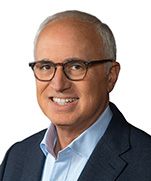As the world reels from the COVID-19 outbreak, autonomous vehicles are receiving a fresh look not only as convenient transportation options but also as public health facilitators. At a time when human contact is discouraged if not prohibited, the prospect of automated vehicles delivering food and supplies is gaining popularity.
Possibly responding to the undercurrents of positive public sentiment, the National Highway Traffic Safety Administration released suggestions on Tuesday of how to update 12 vehicle safety regulations to remove references to human centric components. The report evaluates the regulatory text and test procedures with the goal of identifying possible options to remove barriers for the compliance verification of ADS-dedicated vehicles (ADS-DVs) that lack manually operated driving controls. It also describes activities focused on 6 crash avoidance standards (FMVSS Nos. 102, 108, 114, 118, 138, and 141) and 6 crashworthiness standards (FMVSS Nos. 201, 202a, 203, 204, 205, and 206).
There are 18 remaining FMVSS that NHTSA is planning on reviewing.
In other autonomous vehicle related news, the Alliance for Automotive Innovation is getting behind a proposal to permit both dedicated short-range communications (DSRC) and cellular vehicle-to-everything (C-V2X) technologies to utilize the 5.9 GHz spectrum band for five years, after which time just one of the technologies would be chosen. Specifically, “during the plan’s first five years, LTE C-V2X exclusively will operate in the band’s upper 20 MHz, DSRC exclusively will operate in the lower 20 MHz, and the remaining 30 MHz will be made available on a priority basis to Next-Gen DSRC and Advanced (5G) C-V2X applications as they are developed and deployed. After five years, a single technology will be selected to use the 5.9 GHz band going forward. That will also begin a ten-year phaseout period, during which the technology that does not prevail will phase out of its initial exclusive 20 MHz allocation in either the band’s upper or lower portion.”
The Department of Transportation has not decided whether or not to support the plan.


